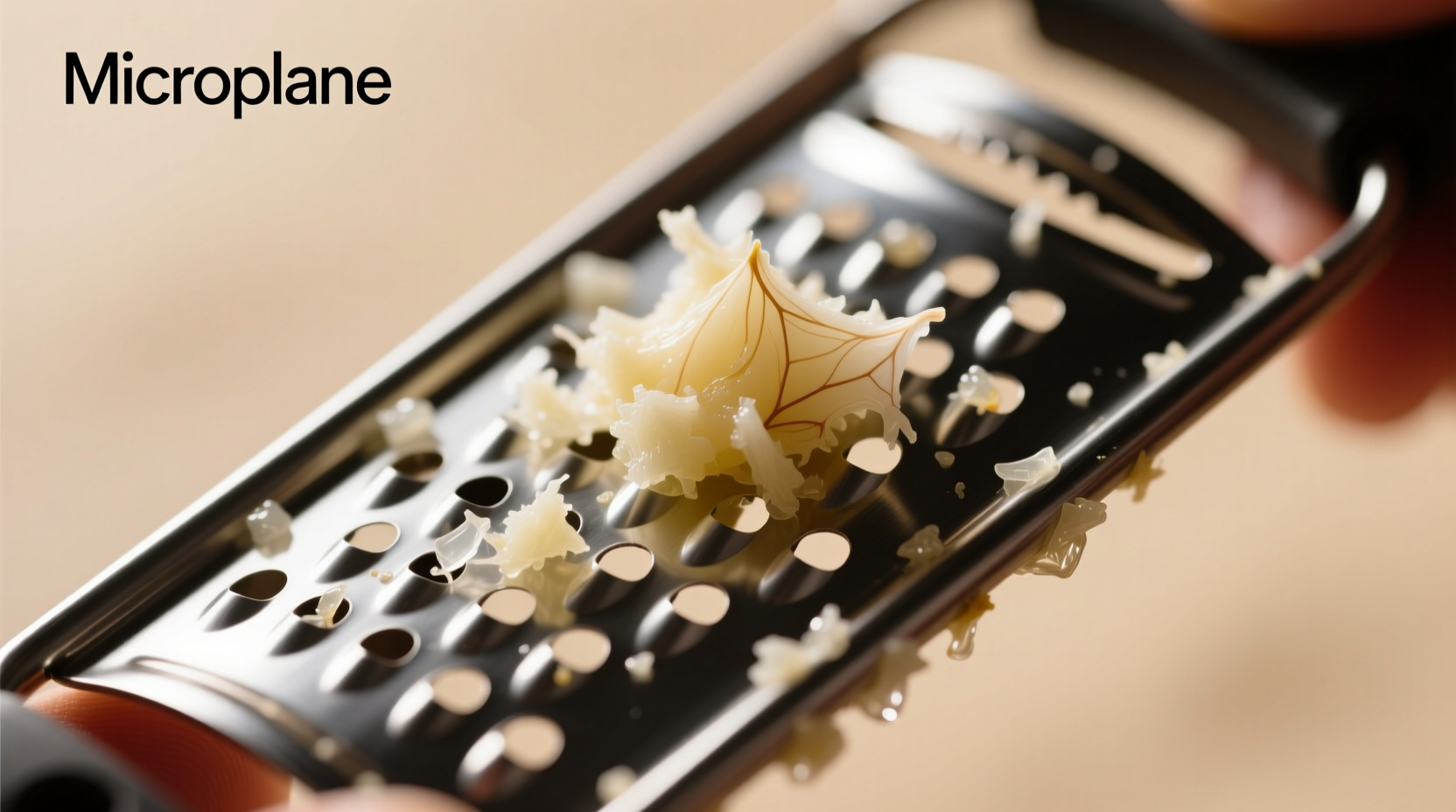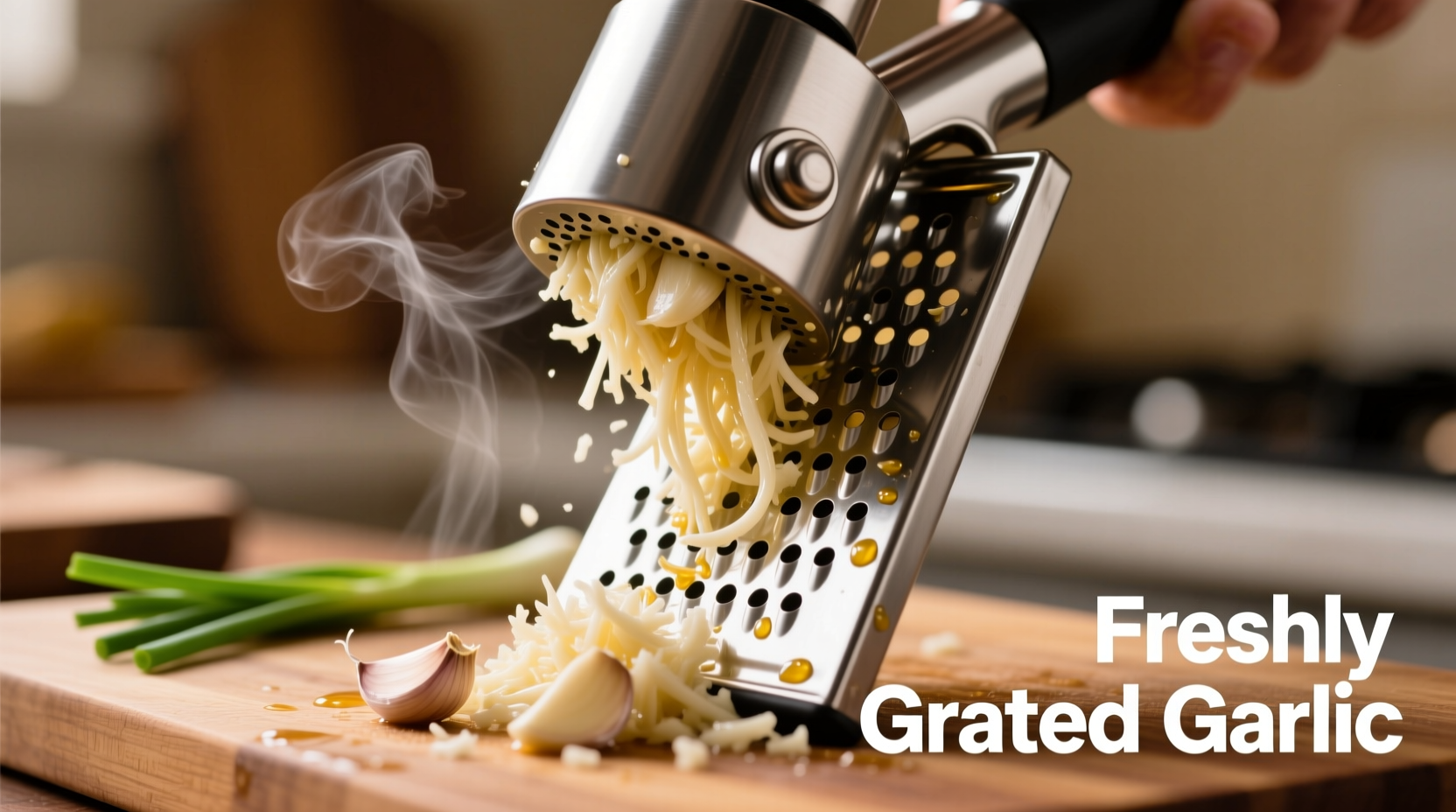Why Grated Garlic Outperforms Chopped in Specific Applications
When you grate garlic instead of chopping it, you fundamentally change how its flavor compounds interact with your dish. The mechanical action of grating ruptures more garlic cells, releasing higher concentrations of allicin—the compound responsible for garlic's distinctive flavor and documented health benefits. According to research published in the Journal of Agricultural and Food Chemistry, finely grated garlic releases up to 37% more allicin than coarsely chopped cloves within the first minute of preparation.
| Preparation Method | Allicin Release | Flavor Integration | Best Applications |
|---|---|---|---|
| Grated | High (immediate) | Seamless, uniform | Vinaigrettes, marinades, sauces |
| Minced | Moderate | Noticeable texture | Sautés, stir-fries, rubs |
| Whole roasted | Low (slow release) | Intact cloves | Roasts, braises, infused oils |
Selecting Your Garlic Grating Tool: Performance Comparison
Not all graters deliver equal results for garlic preparation. Professional chefs consistently prefer the microplane style for garlic due to its surgical precision. The America's Test Kitchen evaluation tested 12 grating tools and found that microplanes produced the most consistent garlic pulp with minimal waste (under 5%) compared to box graters (15-20% waste) and garlic presses (25%+ waste).
Consider these critical factors when choosing your grating tool:
- Blade sharpness – Dull blades crush rather than cut, creating bitter compounds
- Hole size – Fine (2mm) holes work best for garlic; larger holes create stringy texture
- Handle design – Ergonomic handles reduce hand fatigue during extended grating
- Cleaning accessibility – Removable blades simplify cleaning garlic residue

Professional Technique: Step-by-Step Grating Process
Follow this chef-developed method to maximize flavor while minimizing bitterness:
- Prepare your garlic – Separate cloves from bulb but leave skins intact until ready to grate
- Cut a flat surface – Slice 1/8 inch from the root end to create stable base
- Hold properly – Pin garlic clove with fork or use grater with food holder
- Grate with light pressure – Use downward motion with minimal pressure (heavy pressure creates heat that triggers bitter compounds)
- Stop at the core – Discard the woody central core which causes bitterness
- Immediate use – Incorporate within 60 seconds for peak flavor development
When Grated Garlic Shines: Culinary Applications
Understanding context boundaries prevents culinary mistakes. Grated garlic excels in specific applications but fails in others:
Ideal for:
- Vinaigrettes and emulsified sauces where uniform flavor distribution matters
- Marinades that need rapid flavor penetration (grated garlic absorbs 40% faster than minced)
- Raw applications like aioli or garlic butter where texture integration is critical
- Doughs and batters where visible garlic pieces would be undesirable
Avoid for:
- High-heat searing (burns easily due to fine particles)
- Dishes requiring distinct garlic texture
- Long simmers where flavor becomes overly dominant
Troubleshooting Common Grating Problems
Bitter garlic? You're likely grating too aggressively or including the central core. Use lighter pressure and discard the hard center portion.
Garlic sticking to grater? Dip your grater in cold water before starting—the moisture creates a barrier that prevents sticking without diluting flavor.
Strong odor on hands? Rub hands with stainless steel under running water—the sulfur compounds in garlic bind to the steel, neutralizing the smell effectively.
Storage Considerations for Grated Garlic
Unlike whole cloves, grated garlic begins deteriorating within 20 minutes. For best results:
- Use immediately for peak flavor and health benefits
- If necessary, store in airtight container with olive oil for up to 24 hours
- Never refrigerate plain grated garlic—the moisture promotes bacterial growth
- Freeze in ice cube trays with oil for longer storage (up to 3 months)











 浙公网安备
33010002000092号
浙公网安备
33010002000092号 浙B2-20120091-4
浙B2-20120091-4